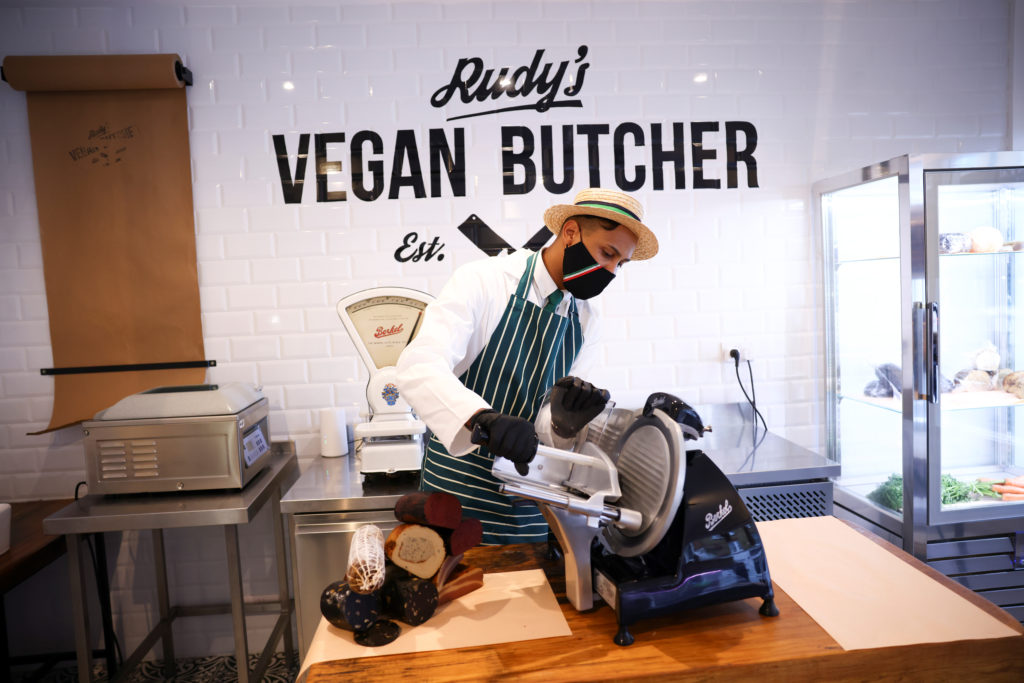 A member of staff works inside ‘Rudy’s Vegan Butcher’ shop, amid the coronavirus (COVID-19) outbreak, in London, Britain, October 30, 2020. Picture taken October 30, 2020. REUTERS/Henry Nicholls
A member of staff works inside ‘Rudy’s Vegan Butcher’ shop, amid the coronavirus (COVID-19) outbreak, in London, Britain, October 30, 2020. Picture taken October 30, 2020. REUTERS/Henry NichollsScientists studied twins’ diets. Those who ate vegan saw fast results.
 A member of staff works inside ‘Rudy’s Vegan Butcher’ shop, amid the coronavirus (COVID-19) outbreak, in London, Britain, October 30, 2020. Picture taken October 30, 2020. REUTERS/Henry Nicholls
A member of staff works inside ‘Rudy’s Vegan Butcher’ shop, amid the coronavirus (COVID-19) outbreak, in London, Britain, October 30, 2020. Picture taken October 30, 2020. REUTERS/Henry NichollsHow to maintain a healthy gut microbiome in 2024
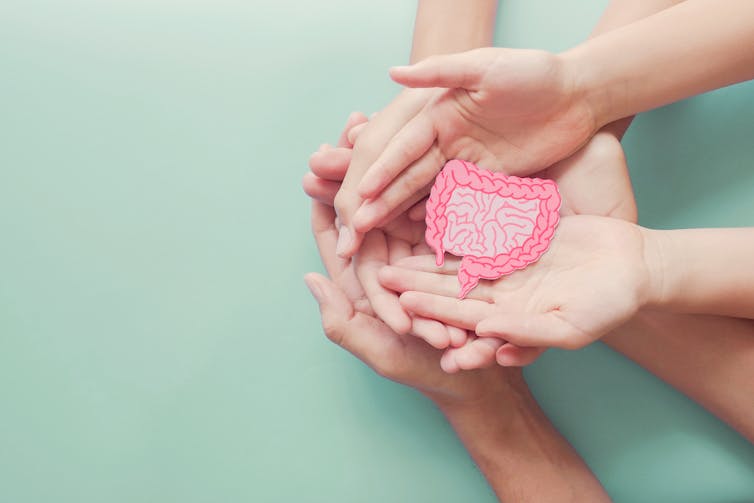 SewCreamStudio/Shutterstock Rosie Young, Quadram Institute; Mariam Gamal El-Din, Quadram Institute, and Yang Yue, Quadram InstituteWe all know by now that the pillars of a healthy lifestyle are regular exercise, eating enough fruit and vegetables, a good night’s sleep and staying hydrated. All of these things also support the gut microbiome – all the microbes that live in your digestive system – but there are some extras to consider if you want to optimise your gut health.
SewCreamStudio/Shutterstock Rosie Young, Quadram Institute; Mariam Gamal El-Din, Quadram Institute, and Yang Yue, Quadram InstituteWe all know by now that the pillars of a healthy lifestyle are regular exercise, eating enough fruit and vegetables, a good night’s sleep and staying hydrated. All of these things also support the gut microbiome – all the microbes that live in your digestive system – but there are some extras to consider if you want to optimise your gut health.
It’s widely accepted among those of us who study the gut microbiome that a healthy gut is one that contains a diverse range of microbes and has an effective gut barrier (the lining between your intestine and bloodstream).
Let’s look at diet first. It probably has the biggest influence on your gut health. Diets high in fibre, unsaturated fatty acids (found in fish and nuts), and polyphenols (chemicals found in plants) will promote a healthy gut, while those high in saturated fats, additives (such as “E numbers”) and sugar can harm gut health. So avoid consuming a lot of ultra-processed foods.
Emulsifiers, a common additive in ultra-processed foods, have been found to cause intestinal inflammation and a leaky gut. The most common ones to look out for on packaging are lecithin, guar or xanthan gum, and mono- or diglycerides.
These additives are also common in protein supplements, whose popularity has steadily been increasing since the early 2000s, especially among gym goers looking to bulk up.
Prebiotics and probiotics
It would be unreasonable and unrealistic to tell you to avoid foods with additives, but trying to limit consumption, while increasing your consumption of prebiotic and probiotic foods, could help protect your gut.
Dietary fibre is a good example of a prebiotic, which is defined as a non-digestible food ingredient that can stimulate the growth of good bacteria in the colon. As the main food source of your gut microbes, it is important to consume enough if you want your microbiome to flourish. Government guidelines suggest around 30g of fibre a day for adults and 15-25g for children.
 Adults should aim to consume 30g of fibre a day. Tatjana Baibakova/Shutterstock
Adults should aim to consume 30g of fibre a day. Tatjana Baibakova/Shutterstock
Most prebiotics come from plant foods, so getting a high diversity of plant products in your diet will keep your gut healthy. The latest recommendation is to include 30 plant species in your diet per week. This may sound hard to achieve but bear in mind that both good-quality coffee and dark chocolate count.
Probiotics, the live bacteria and yeasts themselves, can be easily consumed through fermented food products, drinks or supplements. Choosing a high-quality probiotic is important. While there is an increasing amount on the market in supplement, powder and tablet form, they can be expensive. Fermented foods can be just as effective, but a whole lot cheaper.
Yoghurts, cheese, sauerkraut, kimchi and fermented soy products, such as tempeh and miso, are examples of fermented foods that not only support the healthy balance of your gut bacteria but provide a good source of fibres, vitamins and other nutrients.
To get the most benefit from these products, look for those in the fridge section labelled as containing “live cultures” or “live bacteria”, with minimal ingredients and no heating or pasteurisation processing.
Aside from what you eat, how often you eat could also affect your gut health. Fasting can allow repair of the gut lining and reduce inflammation.
Medication and the microbiome
Medications can directly and indirectly affect our gut health. You may have heard that antibiotics are bad for your gut microbiome, especially those which are “broad spectrum” and will kill off not only harmful bacteria but beneficial ones too. This can be associated with gastrointestinal problems and decreased immunity, especially after prolonged use.
Of course, doctors do not prescribe antibiotics lightly, so it is important to take them as instructed. If you are concerned, discuss the potential effects on your gut health with your GP.
Although you may not have much say over which medications you take, there are a few strategies to support your gut during and after medication.
Staying healthy by prioritising good sleep and managing stress levels is also important, but increasing your intake of both prebiotics and probiotics at this time may lessen the blow of medication on your microbiome.
It is always recommended you check with your doctor before introducing a probiotic supplement in the rare case that it may not be suitable alongside the treatment.
Microbiome research is continuously shedding new light on the intricate connections between the microbes that live in our gut and our wellbeing. So watch this space. In the meantime, follow the above advice – it will help you maintain a healthy gut microbiome in 2024 and beyond.![]()
Rosie Young, PhD Candidate, Gut Microbes in Health and Disease, Quadram Institute; Mariam Gamal El-Din, Visiting Postdoctoral Scientist, Food Microbiome Interactions, Quadram Institute, and Yang Yue, PhD Candidate in Plants, Food and Health, Quadram Institute
This article is republished from The Conversation under a Creative Commons license. Read the original article.
Moderna CEO says melanoma vaccine could be available by 2025

Got milk? If you’re Black, Asian or Hispanic, make it lactose-free
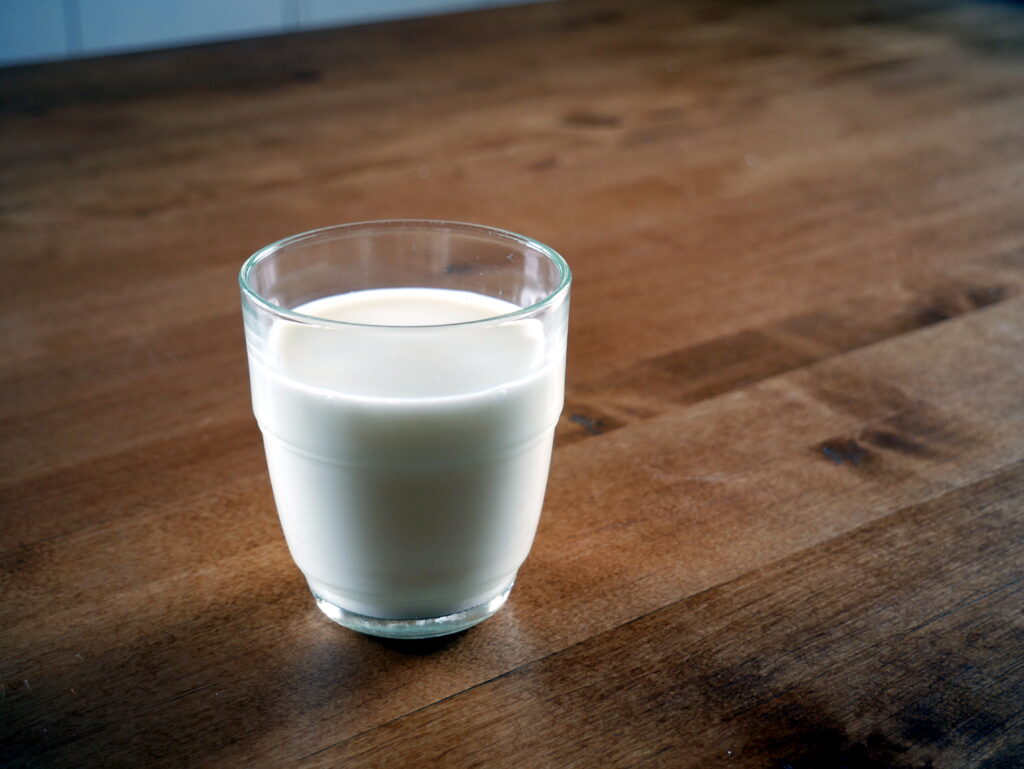 Glass of milk. Photo: wikimedia.org
Glass of milk. Photo: wikimedia.orgIs it okay to kiss your pet? The risk of animal-borne diseases is small, but real
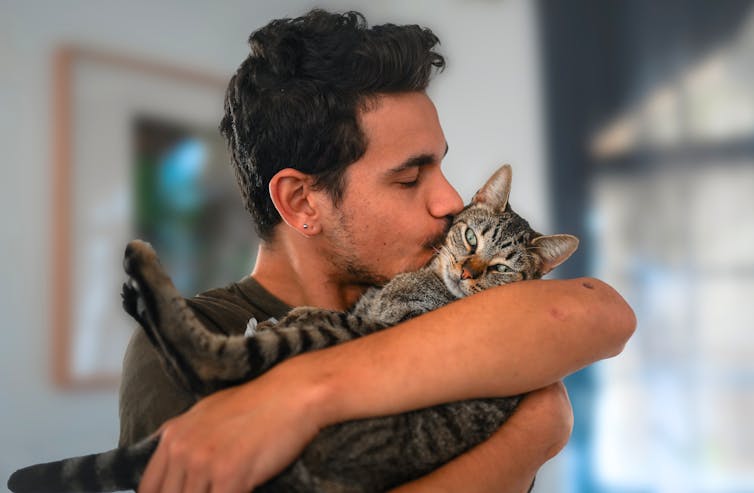 Shutterstock Sarah McLean, Swinburne University of Technology and Enzo Palombo, Swinburne University of Technology
Shutterstock Sarah McLean, Swinburne University of Technology and Enzo Palombo, Swinburne University of Technology Our relationship with pets has changed drastically in recent decades. Pet ownership is at an all-time high, with a recent survey finding 69% of Australian households have at least one pet. We spend an estimated A$33 billion every year on caring for our fur babies.
While owning a pet is linked to numerous mental and physical health benefits, our pets can also harbour infectious diseases that can sometimes be passed on to us. For most people, the risk is low.
But some, such as pregnant people and those with weakened immune systems, are at greater risk of getting sick from animals. So, it’s important to know the risks and take necessary precautions to prevent infections.
What diseases can pets carry?
Infectious diseases that move from animals to humans are called zoonotic diseases or zoonoses. More than 70 pathogens of companion animals are known to be transmissible to people.
Sometimes, a pet that has a zoonotic pathogen may look sick. But often there may be no visible symptoms, making it easier for you to catch it, because you don’t suspect your pet of harbouring germs.
Zoonoses can be transmitted directly from pets to humans, such as through contact with saliva, bodily fluids and faeces, or indirectly, such as through contact with contaminated bedding, soil, food or water.
Studies suggest the prevalence of pet-associated zoonoses is low. However, the true number of infections is likely underestimated since many zoonoses are not “notifiable”, or may have multiple exposure pathways or generic symptoms.
Dogs and cats are major reservoirs of zoonotic infections (meaning the pathogens naturally live in their population) caused by viruses, bacteria, fungi and parasites. In endemic regions in Africa and Asia, dogs are the main source of rabies which is transmitted through saliva.
Dogs also commonly carry Capnocytophaga bacteria in their mouths and saliva, which can be transmitted to people through close contact or bites. The vast majority of people won’t get sick, but these bacteria can occasionally cause infections in people with weakened immune systems, resulting in severe illness and sometimes death. Just last week, such a death was reported in Western Australia.
Cat-associated zoonoses include a number of illnesses spread by the faecal-oral route, such as giardiasis, campylobacteriosis, salmonellosis and toxoplasmosis. This means it’s especially important to wash your hands or use gloves whenever handling your cat’s litter tray.
Cats can also sometimes transmit infections through bites and scratches, including the aptly named cat scratch disease, which is caused by the bacterium Bartonella henselae.
Both dogs and cats are also reservoirs for methicillin-resistant bacterium Staphylococcus aureus (MRSA), with close contact with pets identified as an important risk factor for zoonotic transmission.
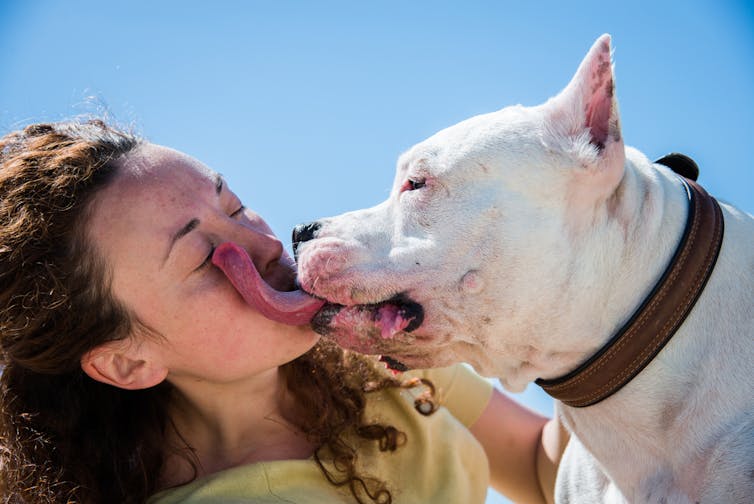
But it’s not just dogs and cats that can spread diseases to humans. Pet birds can occasionally transmit psittacosis, a bacterial infection which causes pneumonia. Contact with pet turtles has been linked to Salmonella infections in humans, particularly in young children. Even pet fish have been linked to a range of bacterial infections in humans, including vibriosis, mycobacteriosis and salmonellosis.
Close contact with animals – and some behaviours in particular – increase the risk of zoonotic transmission. A study from the Netherlands found half of owners allowed pets to lick their faces, and 18% allowed dogs to share their bed. (Sharing a bed increases the duration of exposure to pathogens carried by pets.) The same study found 45% of cat owners allowed their cat to jump onto the kitchen sink.
Kissing pets has also been linked to occasional zoonotic infections in pet owners. In one case, a woman in Japan developed meningitis due to Pasteurella multicoda infection, after regularly kissing her dog’s face. These bacteria are often found in the oral cavities of dogs and cats.
Young children are also more likely to engage in behaviours which increase their risk of getting sick from animal-borne diseases – such as putting their hands in their mouth after touching pets. Children are also less likely to wash their hands properly after handling pets.
Although anybody who comes into contact with a zoonotic pathogen via their pet can become sick, certain people are more likely to suffer from serious illness. These people include the young, old, pregnant and immunosuppressed.
For example, while most people infected with the toxoplasmosis parasite will experience only mild illness, it can be life-threatening or cause birth defects in foetuses.
 Young children under 5 years old are more at risk of zoonotic diseases, and also more likely to engage in behaviours that increase their chances of catching something from their pet. Shutterstock
Young children under 5 years old are more at risk of zoonotic diseases, and also more likely to engage in behaviours that increase their chances of catching something from their pet. Shutterstock There are a number of good hygiene and pet husbandry practices that can reduce your risk of becoming sick. These include:
- washing your hands after playing with your pet and after handling their bedding, toys, or cleaning up faeces
- not allowing your pets to lick your face or open wounds
- supervising young children when they are playing with pets and when washing their hands after playing with pets
- wearing gloves when changing litter trays or cleaning aquariums
- wetting bird cage surfaces when cleaning to minimise aerosols
- keeping pets out of the kitchen (especially cats who can jump onto food preparation surfaces)
- keeping up to date with preventative veterinary care, including vaccinations and worm and tick treatments
- seeking veterinary care if you think your pet is unwell.
It is especially important for those who are at a higher risk of illness to take precautions to reduce their exposure to zoonotic pathogens. And if you’re thinking about getting a pet, ask your vet which type of animal would best suit your personal circumstances.

Sarah McLean, Lecturer in environmental health, Swinburne University of Technology and Enzo Palombo, Professor of Microbiology, Swinburne University of Technology
This article is republished from The Conversation under a Creative Commons license. Read the original article.
